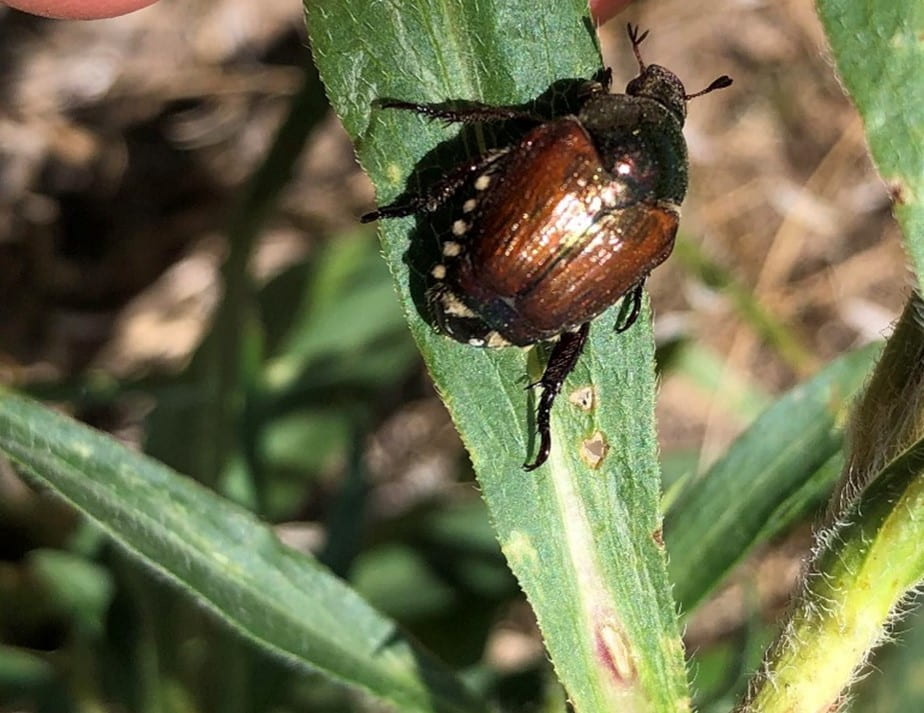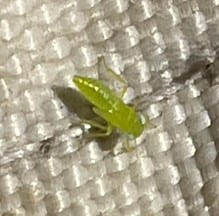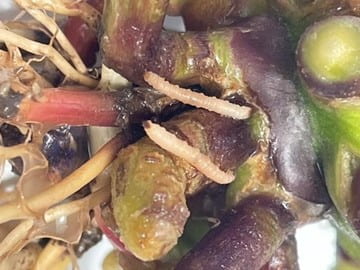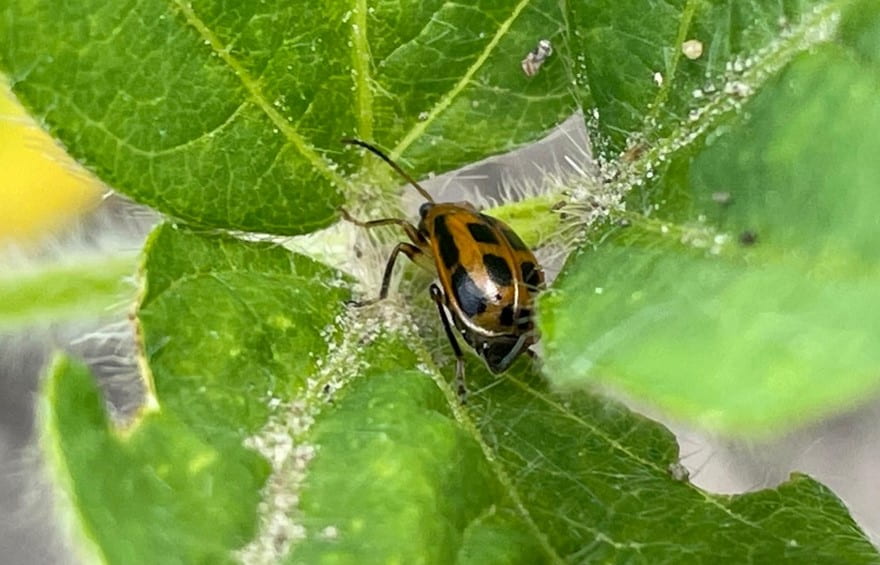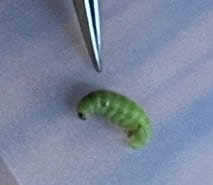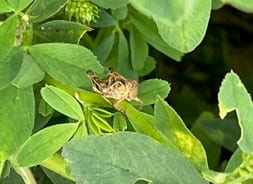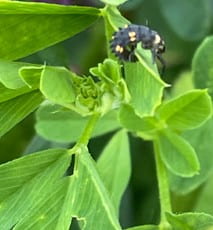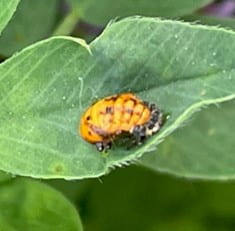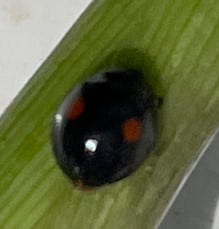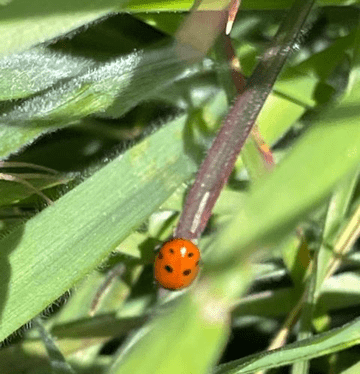–by Dr. Jeff Whitworth — Field Crops
Alfalfa caterpillars are currently very common in both alfalfa and soybean fields. They are shy and extremely well camouflaged (see fig 2) and therefore rarely noticed. They are voracious leaf feeders, however, populations rarely reach densities in either crop to warrant an insecticide application. These larvae are the feeding stage of the common yellow or white butterflies often seen flying around either soybean or alfalfa fields where they can be seen often dipping down into the canopies to deposit eggs or gathering around water to drink. This activity, coupled with often large numbers of these butterflies, sometimes causes concern to growers. Howe

Figure 2. Alfalfa caterpillar (picture by Cody Wyckoff)


